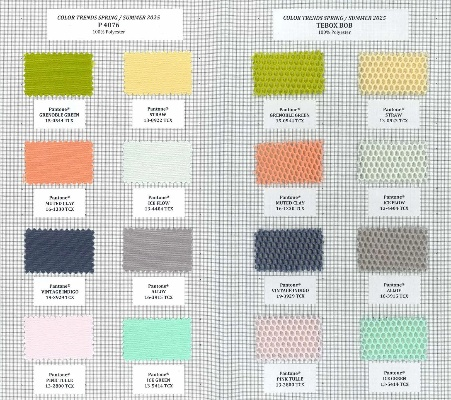The Purpose of Textile Physical Testing
The purpose of textile physical testing is to assess the quality and performance of fabrics, yarns, and other textile materials. This testing includes measuring various properties, such as strength, flexibility, abrasion resistance, and durability, to ensure that they meet specific standards and requirements for use in different applications. The results of these tests provide valuable information about the material's suitability for use in various industries, including apparel, home furnishings, and industrial goods. Additionally, physical testing is essential for identifying any defects or flaws in the fabric, which can help prevent product failure during use. Overall, textile physical testing plays an important role in ensuring the safety and efficacy of textile products, and it is an integral part of the manufacturing process.
Textile physical testing is a vital aspect of the textile industry, as it helps in assessing the performance and quality of fabrics. It provides valuable information about the materials' properties, such as strength, durability, color fastness, and softness, that are essential for various applications in apparel, home furnishings, and industrial use. This test method involves measuring the behavior of materials under specific conditions, which can be used to determine their suitability for different uses. In this guide, we will explore the primary objectives of textile physical testing and how it contributes to ensuring the end-to-end success of the textile industry chain.
Let's start with the importance of understanding textile physical properties. These properties include tensile strength, elongation at break, tear resistance, abrasion resistance, and water absorption, among others. Tensile strength refers to the maximum force that can be applied to a material before it breaks, while elongation at break measures how much the material can stretch before breaking. Tear resistance indicates how easily the fabric tears when tested under tension. Abrasion resistance is important for wear and tear in daily use, while water absorption is crucial for outdoor clothing and sportswear.
Now let's discuss the types of tests performed on textiles to evaluate these physical properties. There are various methods used to measure the above properties, each with its own set of advantages and limitations. For example, tensile testing allows researchers to understand how fabrics resist stretching, while tear testing provides information on how fabrics hold together when subjected to pulling forces. Abrasion testing is used to evaluate how well fabrics wear against other objects, while water absorption testing measures how quickly a textile dries after exposure to moisture.

In addition to evaluating individual properties, physical testing also helps identify any defects or flaws in the fabrics. These defects may affect the overall performance and durability of the garments made from those fabrics. By identifying these issues early on, manufacturers can take corrective measures before the product reaches the end user.
One of the most common examples of textile physical testing is the determination of tensile strength and elongation at break in cotton fabrics. Tensile strength tests measure how much stress a fabric can withstand before it breaks, while elongation at break measures how much the fabric can stretch before it breaks. By analyzing these properties, manufacturers can ensure that their cotton fabrics meet the required standards for comfort, durability, and functionality.
Another example is the assessment of abrasion resistance in polyester fabrics. Polyester is a popular material for outdoor clothing because it resists wear and tear well. Abrasion testing involves rubbing the fabric against an abrasive surface to measure how well it resists damage. This test can help manufacturers improve the design and manufacturing process to enhance the fabric's durability and longevity.
Water absorption tests are also important in textile physical testing, particularly for outdoor clothing and swimwear. These fabrics need to be able to absorb moisture without losing shape or weight. Water absorption testing measures how quickly a fabric dries after exposure to moisture, which can impact its comfort and performance in wet conditions.
To summarize, the purpose of textile physical testing is to assess the performance and quality of fabrics in terms of their mechanical properties. By using various techniques such as tensile testing, tear testing, abrasion testing, and water absorption testing, manufacturers can identify any defects or flaws in the fabrics and ensure that they meet the desired standards for comfort, durability, and functionality. Ultimately, this ensures that textile products are safe, comfortable, and reliable for their intended use and benefit consumers worldwide.
在纺织品研发和生产过程中,物理测试是不可或缺的一环,其目的在于确保纺织品在各种使用场景下的性能和质量,满足消费者的需求,本文将围绕纺织品物理测试的目的进行详细阐述。
纺织品物理测试的目的
评估纺织品的基本性能

纺织品物理测试的主要目的是评估其基本性能,包括强度、耐磨性、吸湿性、透气性、柔软性等,这些性能指标直接关系到纺织品在日常使用中的舒适度、耐用性和安全性。
确定纺织品的质量标准
通过物理测试,可以确定纺织品的尺寸稳定性、抗皱性、色牢度等质量标准,这些标准有助于确保纺织品在市场上的竞争力,满足不同消费者的需求。
发现纺织品潜在的问题
通过物理测试,可以发现纺织品在生产过程中可能存在的问题,如纤维结构、织物结构等,这些问题可能导致纺织品在使用过程中出现性能下降或质量问题。
物理测试的具体方法与案例分析
具体方法
(1)拉伸测试:用于评估纺织品的强度和耐磨性,通过拉伸测试,可以确定纺织品的抗拉强度和伸长率,以及纤维的耐磨性。
(2)摩擦测试:用于评估纺织品的吸湿性和透气性,通过摩擦测试,可以确定纺织品的摩擦系数和吸湿性能,以及织物的透气性能。

(3)热收缩测试:用于评估纺织品的尺寸稳定性,通过热收缩测试,可以确定纺织品的尺寸变化范围和热收缩率。
(4)光泽度测试:用于评估纺织品的外观质量,通过光泽度测试,可以确定纺织品的表面光泽度和颜色均匀性。
案例分析
(1)案例一:某品牌牛仔布的物理测试案例
该品牌牛仔布经过拉伸测试,结果显示其具有较高的抗拉强度和伸长率,表明其具有良好的耐磨性,通过摩擦测试,也发现该牛仔布具有良好的吸湿性和透气性,满足了消费者的需求。
(2)案例二:某新型纤维材料的物理测试案例
该新型纤维材料经过热收缩测试,结果显示其尺寸稳定性较好,热收缩率较低,这有助于提高该纤维材料的耐用性和稳定性,满足不同消费者的需求。
纺织品物理测试是确保纺织品性能和质量的重要手段,通过物理测试,可以评估纺织品的性能指标和质量标准,发现纺织品潜在的问题,为纺织品研发和生产提供依据,通过案例分析,可以更好地理解纺织品物理测试的目的和方法,为实际生产提供参考。
Articles related to the knowledge points of this article:
The Art of Textile Blending in the Enchanting阁布世界
The Art of Crafting Authentic Textiles at True 如
The New Wave of Textiles in Zhejiang:A Multitude of Opportunities



